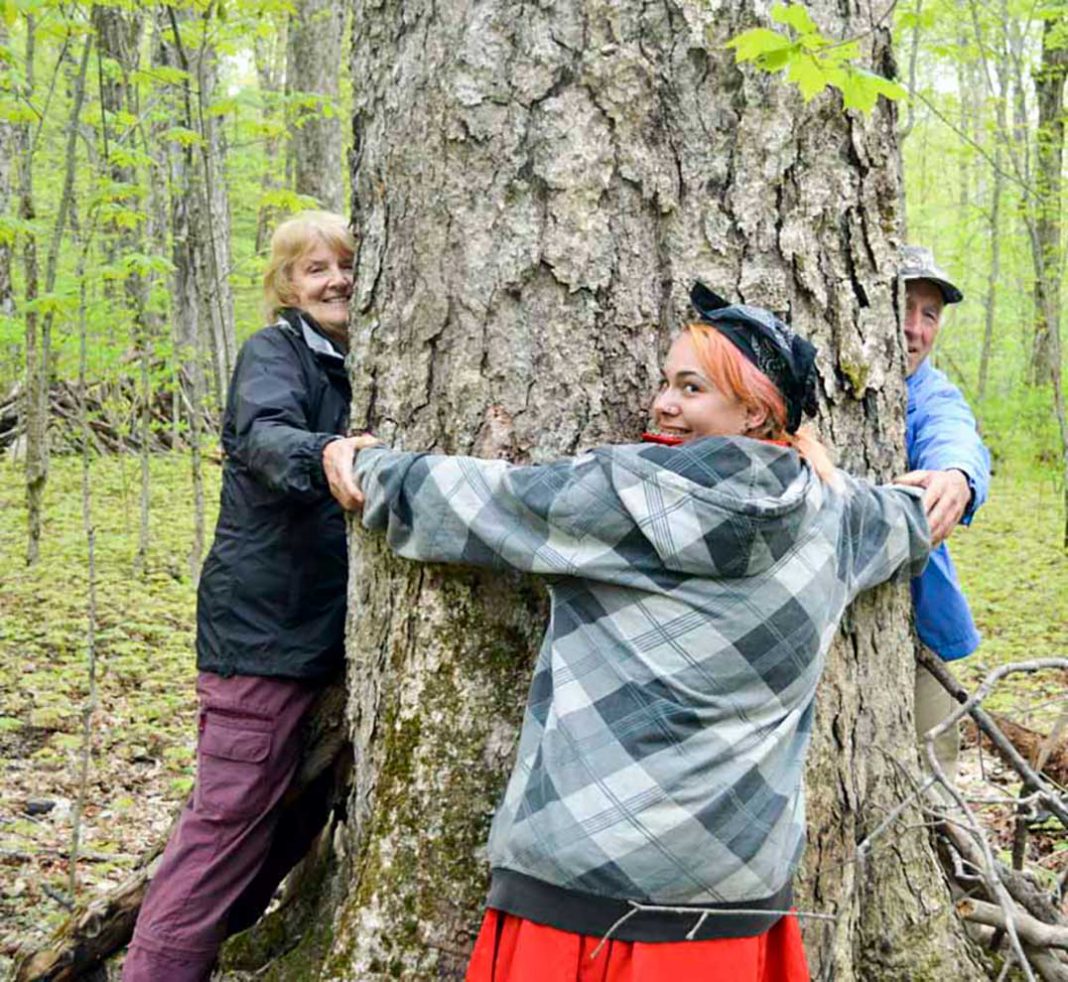MINDEMOYA—Nodding trilliums are a rare sight on Manitoulin Island, not only because the plant is unusual here, but because you have to look for it. Unlike the white trillium, the Ontario emblem that we know and love, the little white flowers of the nodding trillium are underneath the familiar three leaves, about 20 cm above the ground. You have to peer under the leaves to see their hidden beauty.
It’s so easy to just take a casual walk in Wagg’s Wood and miss the special features like this trillium. You have to look for them. When I visited the woods a couple of weeks ago, the leaves were that fresh, light green of spring, and on the ground the maple seedlings provided a carpet of young leaves, with patches of bright yellow violets and trout lilies.
The next day, Judith Jones and her daughter Mira took a small group along the same trail, one of the educational outings they have organized this year. To me, it wasn’t the same trail at all. As they demonstrated, to the trained eye the trail is rich with variety. Besides the ubiquitous yellow flowers I had identified, they uncovered the nodding trillium, and showed us the bog violet, the jack-in-the-pulpit, blue cohosh, two kinds of toothwart (from the mustard family), bloodroot, bulbet ferns, sedges, wild leek and more. Judith and her daughter identified and talked about 24 different plants, where the casual visitor might notice just two or three.
Judith brought some magnifying glasses to see tiny details better. She gave tips on how to recognize different species, such as the funny but memorable rhyme, “Sedges have edges, and rushes are round, but grasses, like asses, have holes.” If you’re not sure, check the stem, and if you feel edges on the stem, it’s a sedge. If it’s round and hollow, it’s grass. A Jack-in-the pulpit, when it reaches maturity, is male, but as it ages it goes through a hermaphrodite stage and later on has only female flowers.
Despite poor weather and blackflies, a group of about 10 people came along to learn about the special plants here. Maddie Becks (nee Wagg), in her mid-nineties and walking with the help of her cane and a friend, stayed for the entire couple of hours. Maddie Becks and her sister made arrangements for the woods to be reserved for a park more than 25 years ago, and it was named in memory of their father, A.J. Wagg. She already knew that the woods had a special environment worth protecting from development.
The north part of Wagg’s Wood, below the escarpment, is a mature hardwood forest, and the plants that thrive here need the shade of the twenty species of trees that provide cover. They can’t survive in cleared fields, and some, like the nodding trillium and blue cohosh, are rare on Manitoulin.
The beginning of the Wagg’s Wood trail is filled with slash from trees that have been cut down, and the parking lot that was created last year is in full view across the slash, as far as the seasonal creek, which is now dry. Beyond this stretch, there is still lovely forest worth saving and a pleasure to visit, especially alongside a knowledgeable botanist.
Judith and Mira Jones are planning other educational walks. More information is available by email at transient19@gmail.com.




